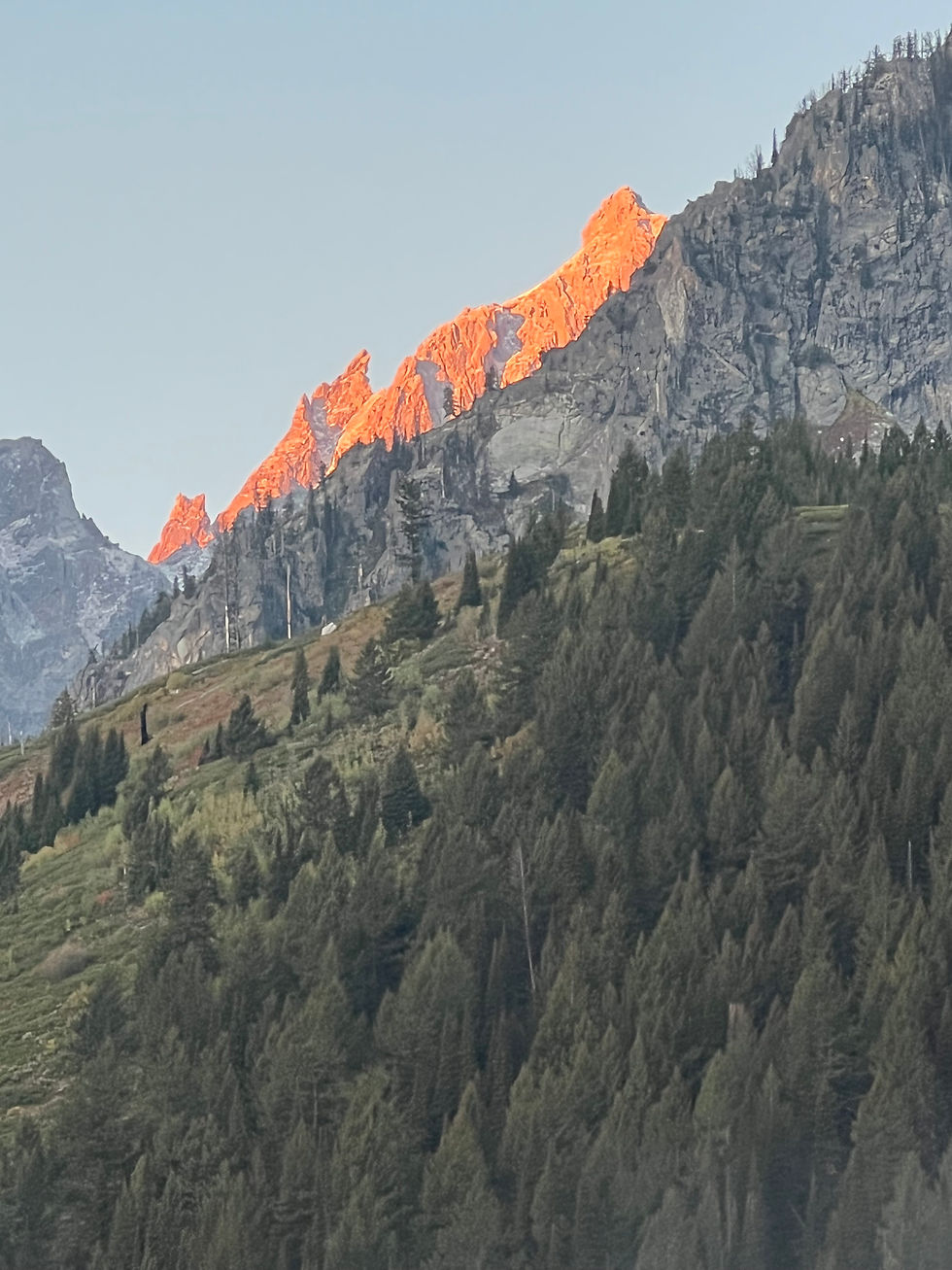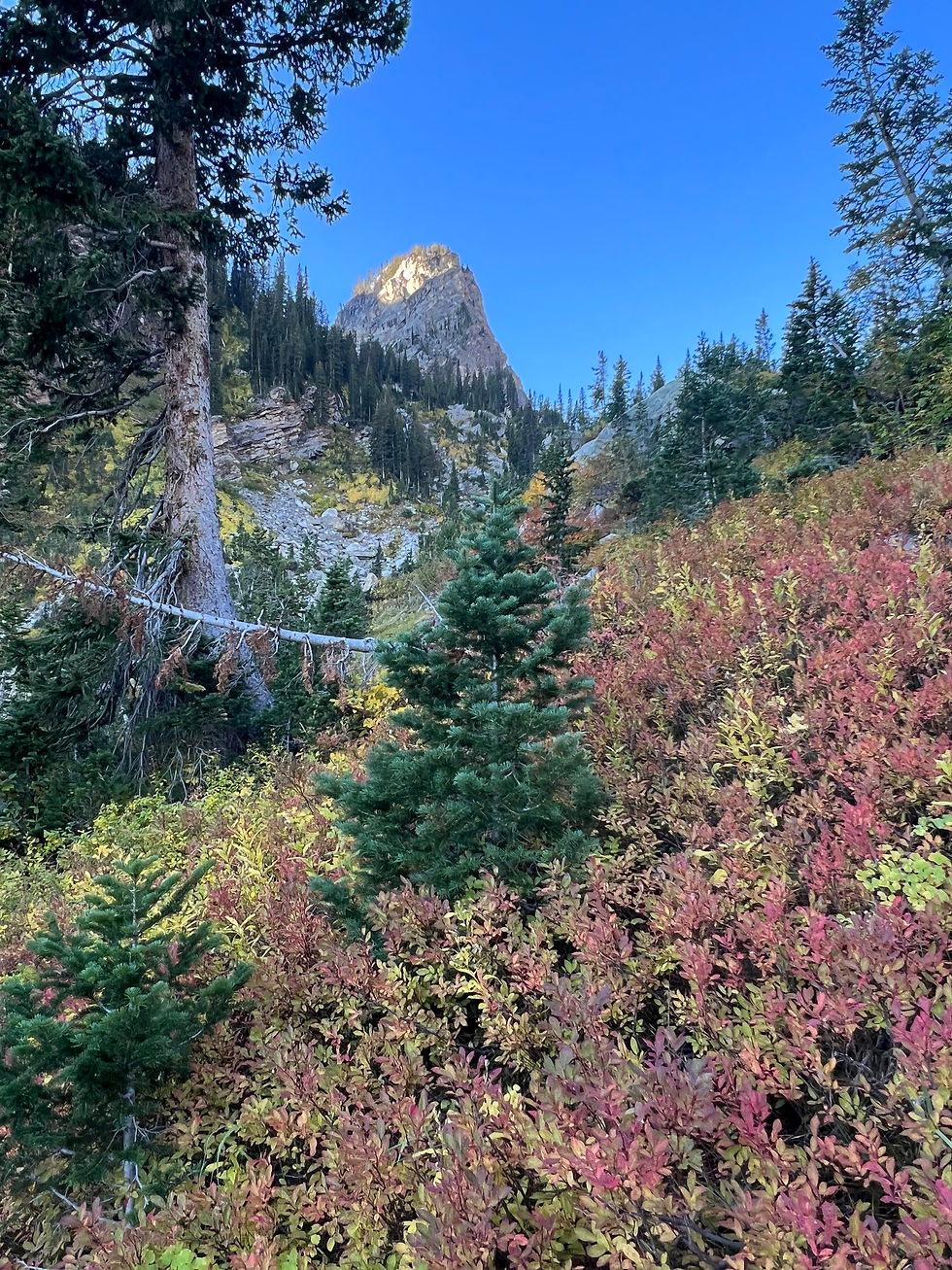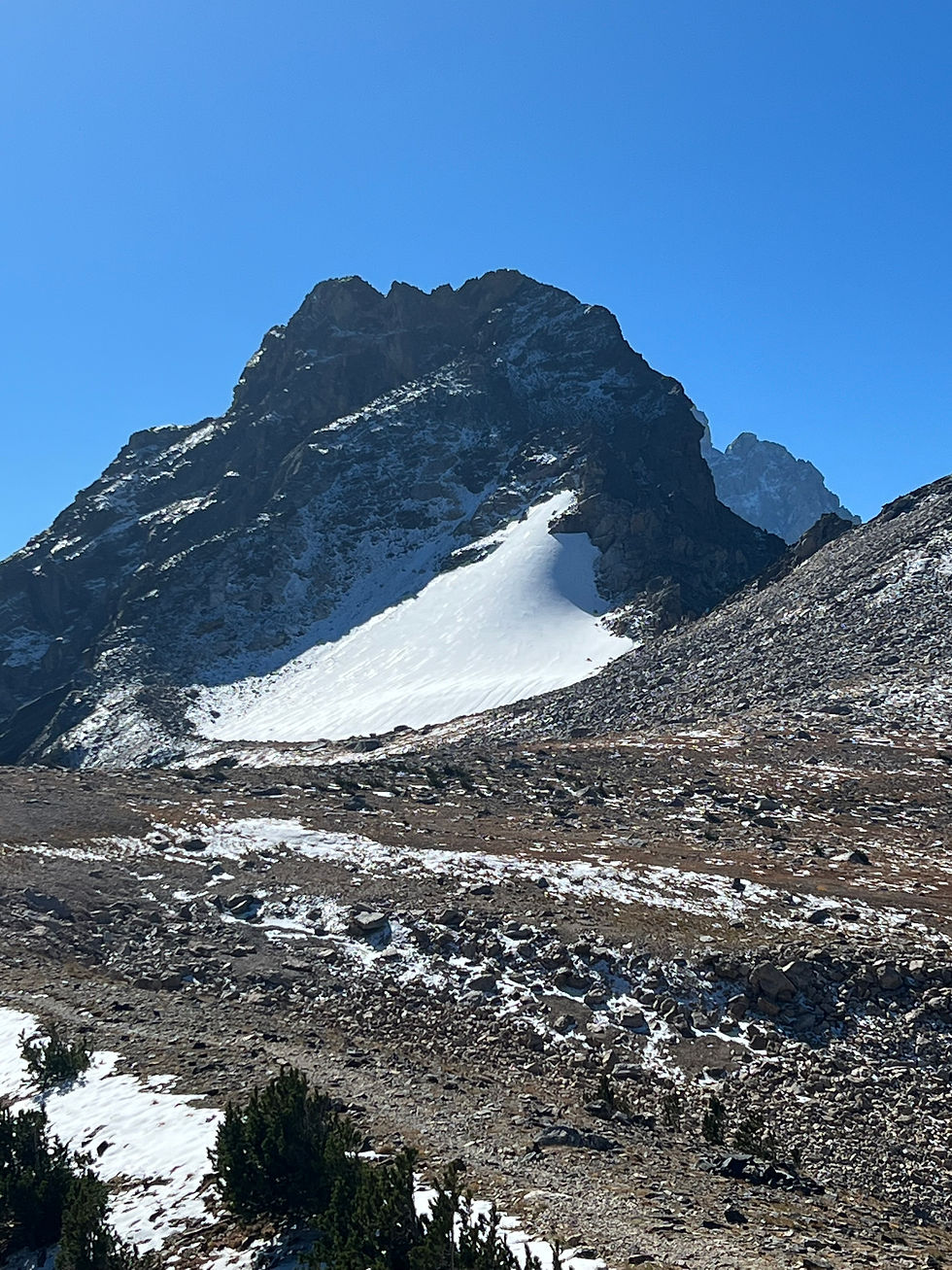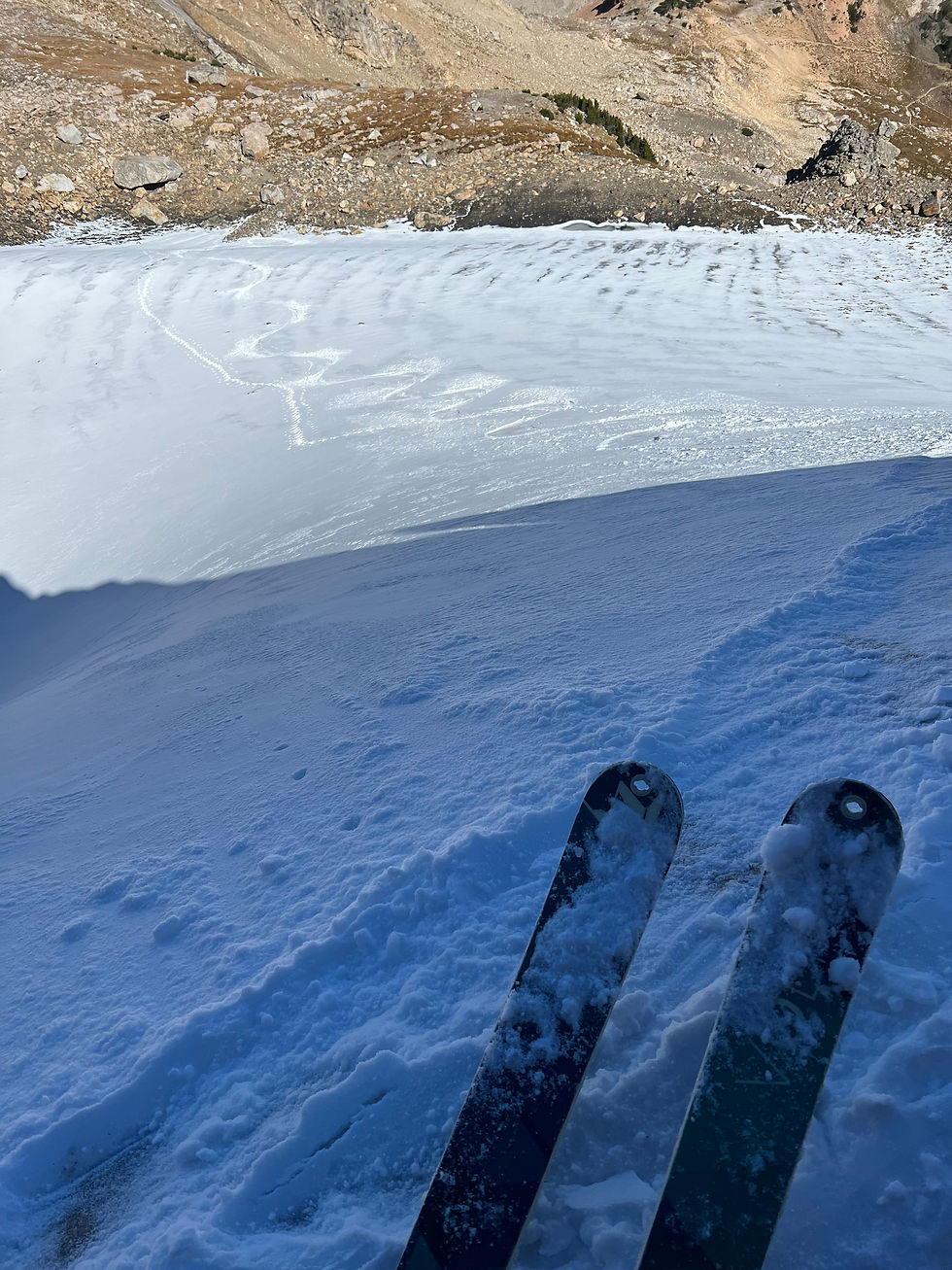September 2022: Paintbrush Divide
- edwardsbushnell
- Oct 15, 2022
- 4 min read
Updated: Jul 9, 2023



September skiing has always been challenging. In the early 2000's summer skiers were faced with dirt and horrific suncups on limited snowfields throughout the Tetons. But however bad the snow was, at least it was...snow.

Over the last decade, the glaciers and permanent snowfields have retreated considerably. In many years, what little "snow" remains is really just glacial ice, often littered with rocks. On warm days it is possible to make turns in the low angle slush between numerous rivulets cutting through the glacier. On the cold days a would-be skier is faced with negotiating down solid ice, like a frozen pond tilted up to one side.
Even accounting for receding snow over time, this year is an outlier. Maybe the snow didn't accumulate as much as in years past, or maybe it melted faster in the early summer. For whatever reason, by the time September came around it was difficult to find any substantial snow in the Tetons.
This year I waited until the final weekend of September to find my turns. Primarily, this delay was in order to maximize recovery time from a broken collarbone in mid-August. But a welcome bonus in waiting until the end of the month was the couple inches of snow that coated the solid glacier ice, providing skis with at least some purchase.
Another benefit of late September outings is the bugling elk at dawn and dusk. And the elk were making a lot of noise on the morning of September 24 at the trailhead. A thin layer of frost coated the cars of overnight campers in the parking lot. Mist rose from the lake, and the sun was just hitting the high peaks as I started out. I was joined by my friend Jim, along for the hike but wisely declining to carry skis.




The colors were phenomenal as we travelled up the canyon. After a little more than three hours as we approached Paintbrush Divide it became apparent how little snow there actually is this year. I assessed the half-dozen tiny patches perched on the shaded slopes of the mountains surrounding the divide. Although many people think of year-round skiing as basically a novelty, the Tetons traditionally have enough late season snow patches of substance that it's possible to put together what you might charitably called a "run." Even in the worst months, there's enough drop to squeeze in 20 or so turns - enough to get into a rhythm and justify the effort. Sometimes there might be enough of a run that I need to stop for a breather mid-way down. What I saw up Paintbrush Canyon on this day was not encouraging. The largest snow patch was maybe 50 vertical feet of ice with no runout before dead-ending into scree.

But I had an ace up my sleeve. Paintbrush Divide has been a go-to for me for the last four years in August or September, and I knew of a snowfield visible only once you are on the divide itself clinging tenaciously to the north side of Mount Fryxell (Peak 11,270) just below 11,000 feet. To my great relief, it was still there. A little worse for wear after the long hot summer, maybe, but still far better than any other option within miles.


Four hours and 15 minutes after leaving the trailhead I was strapping on crampons at the base of the snowfield. The toe pieces of my crampons were able to penetrate the ice underneath the top coating of snow. The bottom half of the ascent was manageable, but as the snowfield got steeper I started to feel exposed and uncomfortable. The front two points of the crampons were the only things keeping me from backward belly slide down the ice. I carried an ice ax but it was ineffective: I tried to slam the pick of the ax into the ice at one point when my right foot slipped; the ice was as solid as a concrete sidewalk and the ax just bounced off of the surface. About 90% up the climb the mountain cliffs protrude out into the ice field, forming a natural shelf where I could comfortably transition from climbing mode to skiing mode. With my calves aching from the strain of the climb I angled over to the shelf.
When there's a thin coat of new snow on top of glacier ice, it's impossible to know for sure whether your skis will hold an edge on the new snow or wash out on the ice. At the top of this run, I couldn't get my skis to hold an edge, but they didn't wash out. Instead I managed a controlled sideslip for about 20 vertical feet as I traversed across the slope. But the slope soon eased enough to be able to commit to a turn. After two or three sketchy turns the slope had further eased enough to dig into each turn and start enjoying the run. The run was short, a dozen-and-a-half turns over 180 vertical feet. (In past years this snowfield is about 260 vertical feet.)
Anyone who skis year round sets his or her own criteria to what "counts" as a monthly ski. My benchmark has always been 500 vertical feet, so I committed to three runs on the Fryxell ice field.
The next two runs were similar to the first: a controlled slide for the first 20 vertical feet, then a few sketchy turns, then about 15-20 extremely enjoyable turns. I had to start from the same point each run as it was the only place I could conceivably switch my crampons out for skis. Each run I traversed a bit further to the east, in the hopes that additional sun exposure would help with the bonding of newer snow to the ice. Perhaps my intuition was correct, or perhaps it was just coincidence, but the quality of turns improved on the two subsequent runs. In fact, I'd go as far as to say I enjoyed the skiing which is a rarity in September.


It was a long hike out, including a quick detour to beautiful Holly Lake, but it was a beautiful fall day. After 10 hours, 18 miles and about 4,700 vertical feet we arrived back at the car, completing month 263.


Comments